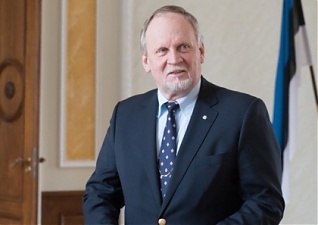Direct Speech, Estonia, EU – Baltic States, Financial Services, Transport
International Internet Magazine. Baltic States news & analytics
Friday, 26.04.2024, 22:35
Tallinn’s public transport is part of a greater plan
 Print version
Print version |
|---|
The size of the subsidy for
Tallinn’s public transport was 12 million euros a year just before transition.
Both local and foreign experts have carried out cost-benefit analyses and it is
now clear that the project has proven its worth, as the number of residents of
Tallinn has grown rapidly and as such it has increased tax revenue. As of 1
January 2012, the number of people living in Tallinn was 416,144 according to
the population register and as of 1 August 2017 it had grown to 445,480. The
increase was 29,336 residents. In terms of Tallinn city budget, every 1,000 new
citizens means one million euros additional tax revenue. Thus, the free public
transport in Tallinn is definitely positive, even from an economic aspect
alone. In terms of city management, the free public transport serves as a means
of promoting environmental and social purposes.
In 2006, when the current Prime
Minister Jüri Ratas was the mayor of
Tallinn, he initiated the idea of “Green Capital” with a purpose of improving
the living environment in European cities and to first and foremost appreciate
and reward the efforts cities make in improving the environment and quality of
life.
The conference of the Commission for
the Environment, Climate Change and Energy of the European Committee of the
Regions took place in Tallinn at the beginning of July, where I held an opening
address and relayed that air pollution has become one of the main environmental
issues in large cities. The increase in traffic volume and restructuring of the
economy have caused rapid changes in this area all over Europe in the last
decade: the focus has shifted from industrial areas to cities. This is further
supported by the air quality monitoring stations in Tallinn. As of today, there
are three national stationary outdoor air monitoring stations in Tallinn
operated by the Estonian Environmental Research Centre. Since intense traffic
flows through the centre of Tallinn, the purpose is to reduce the city centre’s
air pollution and ambient noise level via a more effectively drawn traffic plan
and traffic intensity. For this we need to reduce the number of cars in the
city centre and give priority to public transport. Free public transport
together with a park and ride system is a perfectly suitable choice for
achieving this purpose. The city initiated the park and ride project to reduce
traffic in the city centre as early as 2007. As a part of this, four large car
parks were built around the city centre, allowing their users to conveniently
change for public transportation.
The gate system of the park and ride
car parks allows drivers who are not residents of Tallinn to use public
transport for free and park for free as well. Thus, public transportation has
been integrated in the city’s means of solving environmental issues, and its
results can already been seen – WHO lists Tallinn as the seventh capital in the
world with the cleanest air. Tallinn is moving in the same direction as the
rest of Europe by prioritising pedestrians and public transport. The
availability of public transport also has a direct impact on the social sustainability
of the city environment, since expensive public transport accelerates
impoverishment, limits employment opportunities and promotes antisocial
behaviour.
Tallinn is not a homogeneous city;
even its districts are very diverse. Since all resident groups in Tallinn have
access to public transport, our regionbased differentiation is considerably
slower compared to many other European capitals. All in all we can say that
Tallinners are happy with their free public transport. This is further supported
by the latest study on the citizen’s satisfaction with public services of
Tallinn, showing that 46% of people surveyed thought that the situation of
Tallinn’s public transport has improved within the last 12 months and the
residents are happy with the service. The proportion of residents using the
public transport has also increased. In 2014, as much as 62% of citizens used
public transport daily. According to the study published by the International
Association of Public Transport (UITP) in autumn 2016, Tallinn is among the top
three capitals in Europe where the number of public transport users increases
most rapidly. The UITP statistics show that the use of public transport has
grown by nearly one fifth in Tallinn in the last five years. From 114 million journeys
in 2010 we have made it to 143 million in 2014 taking all the bus, tram,
trolleybus and train journeys within the city into consideration. The number of
bus transport users has grown the most in Tallinn. From 61 million journeys in
2010, we made it to 97 million in 2014. Thus, it has increased by more than a
third. Tallinn’s experience in implementing free public transport has attracted
widespread international attention. There are cities with free public
transportation in the majority of European countries, such as in Poland, where
public transport is entirely or partially free in 50 cities and dozens of other
cities are preparing for a transition to free public transport. In the wider
world, China has shown great interest in implementing free public transport in
Chengdu with a population of 16 million.








 «The Baltic Course» Is Sold and Stays in Business!
«The Baltic Course» Is Sold and Stays in Business!

